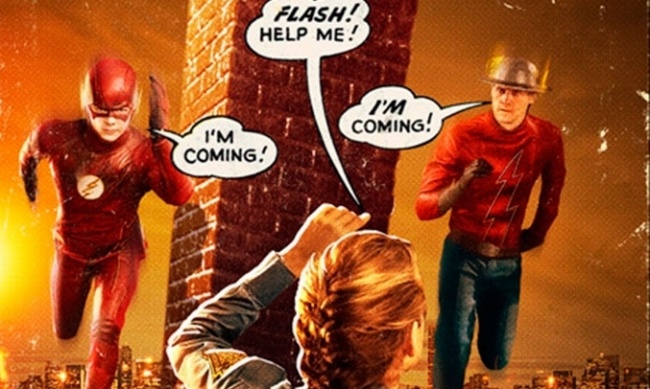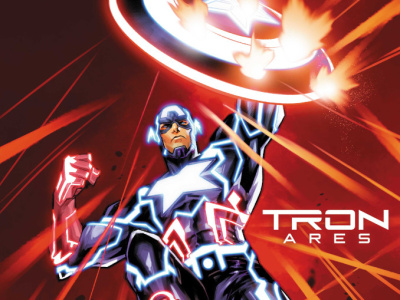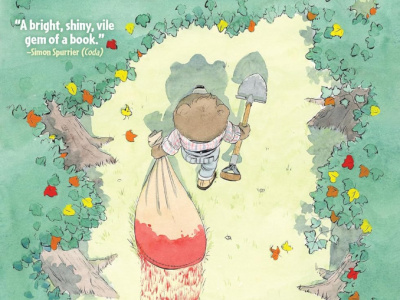Meanwhile, Marvel fans briefly oozed over a rumor that Marvel Studios had re-acquired the rights to the Fantastic Four from 20th Century Fox in some kind of IP swap for a pair of X-Men TV shows, raising hopes that someone would finally do Marvel’s first family justice on the big screen. Turns out that wasn’t true, although it does look like the X-Men-related shows are happening (see “Two ‘X-Men’ TV Series in the Works”).
A few weeks earlier, the buzz was about a reported tiff between Marvel Studios, which runs the movies, and the arm of Marvel Entertainment that runs TV shows like Agents of SHIELD, over the use of the Inhumans characters who are playing an increasingly prominent role in the Marvel media universe. This followed the very public business separation between movie boss Kevin Feige and Marvel CEO Ike Perlmutter, giving Feige increased authority over story directions and use of characters in the films (see “Feige Threatened to Leave to Force Marvel Shake-Up”).
Each of these stories points to the growing integration between comics and their media extensions. Movies, TV shows, web series, and videogames are no longer simply adaptations of comics properties; they are connected parts of story universes that span across pages, screens, corporate boardrooms, and editorial offices on both coasts.
Welcome to the Transmedia Age. Comic fans love dividing things into “ages” – golden, silver, bronze and so on – to distinguish different trends and styles in both the books themselves and the industry. Our current age, which I’d date from the 2009 acquisition of Marvel by Disney, is characterized by the systematic development of comics into transmedia properties.
The key word is “systematic.” Comics have always been fodder for adaptation into other media, dating as far back as the 1930s. But up until recently, a Superman movie, for example, was understood as a movie about the comic book character Superman. The film did not take place in the same story space as the comics, and if there was a comic book adaptation of the movie, it was almost never considered part of the main universe continuity.
Discontinuity? Now that line is blurring. The fannish definition of continuity, the strict canon of imaginary events that connects events in the comics to one another, is giving way to a looser set of connections that evokes familiar story elements and visuals from platform to platform without tying them together as tightly.
Why is that happening? Continuity is the special sauce that makes the superhero properties of DC and Marvel so appealing in a wider media world. It not only conjures up rich universes full of stories, but creates intrigue and desire for additional details (e.g., more content). People form emotional connections to storylines when they see larger patterns behind disconnected narrative events, and thus seek to engage with those universes more deeply to unlock their secrets first.
Continuity makes people care. And in a crowded media market, that’s golden. What’s interesting is how the Big Two are taking slightly different approaches in extending continuity across their media platforms.
Marvel: connect or die. Marvel’s Cinematic Universe is tightly plotted and directly connected across movies, broadcast TV shows (Agents of SHIELD, Agent Carter) and, if the first season of Daredevil was any indication, the Netflix Originals.
The animated shows on Disney XD such as Spider-Man: Web Warriors, Avengers Assemble, Hulk and the Agents of SMASH and Guardians of the Galaxy also seem to share a universe, one that is not the same as the MCU or the comics, but shares enough features with it to allow the overlap of plot elements and characterizations.
Marvel’s big problem is the fragmentation of the movie rights between Marvel Studios, Sony and 20th Century Fox – a business issue that is apparently having very tangible impacts on the stories. The very idea that Marvel would cancel or de-emphasize characters as fundamental to its comic book cosmology as the Fantastic Four, X-Men and Spider-Man because of difficulties integrating them into a fully corporate-driven movie strategy is definitely unique to the current Transmedia Age.
DC: this all looks familiar. Back in the mid-‘00s, when Marvel was laying the groundwork for the MCU with Phase One films like Iron Man, Incredible Hulk, and Thor, DC was still taking a relatively opportunistic approach to adapting its universe. The CW’s long-running and successful Superboy show Smallville only got really geeky in embracing its comic source material in its final seasons; Christopher Nolan’s Dark Knight trilogy existed in its own story bubble; and of DC’s other cinematic efforts, the less said the better.
Now the company appears to be attempting to impose a cross-media strategy after the fact. The Arrow-Flash-Legends of Tomorrow bloc is building a connected story universe that would not take much effort to integrate closely with post-Convergence DC continuity. Gotham shares some history and especially geography not only with the in-continuity Batman comics, but also the Dark Knight films and the Arkham videogame franchise. It remains to be seen how Supergirl or the new Batman-Superman movie connect to this more loosely organized cluster of story worlds, but DC’s multiverse architecture allows for tangents, and Warner Brothers does not face the same business challenges as Marvel with respect to licensing and custody of its key IP.
The exploding head problem. Comic fans long steeped in the conventions of continuity and multiverses find all this stuff incredibly cool and exciting: more proof, if any were needed, that we have stormed the ramparts of popular culture and now operate the levers of its machinery.
But the dawn of the Transmedia Age raises a dilemma: How much complexity is enough to engage people in the intrigues of continuity without making their heads explode? And, conversely, how casual can they be about inconsistencies within their transmedia universes before the whole thing starts to look like incoherent nonsense?
--Rob Salkowitz (@robsalk) is the author of Comic-Con and the Business of Pop Culture.
The opinions expressed in this column are solely those of the writer, and do not necessarily reflect the views of the editorial staff of ICv2.com.









